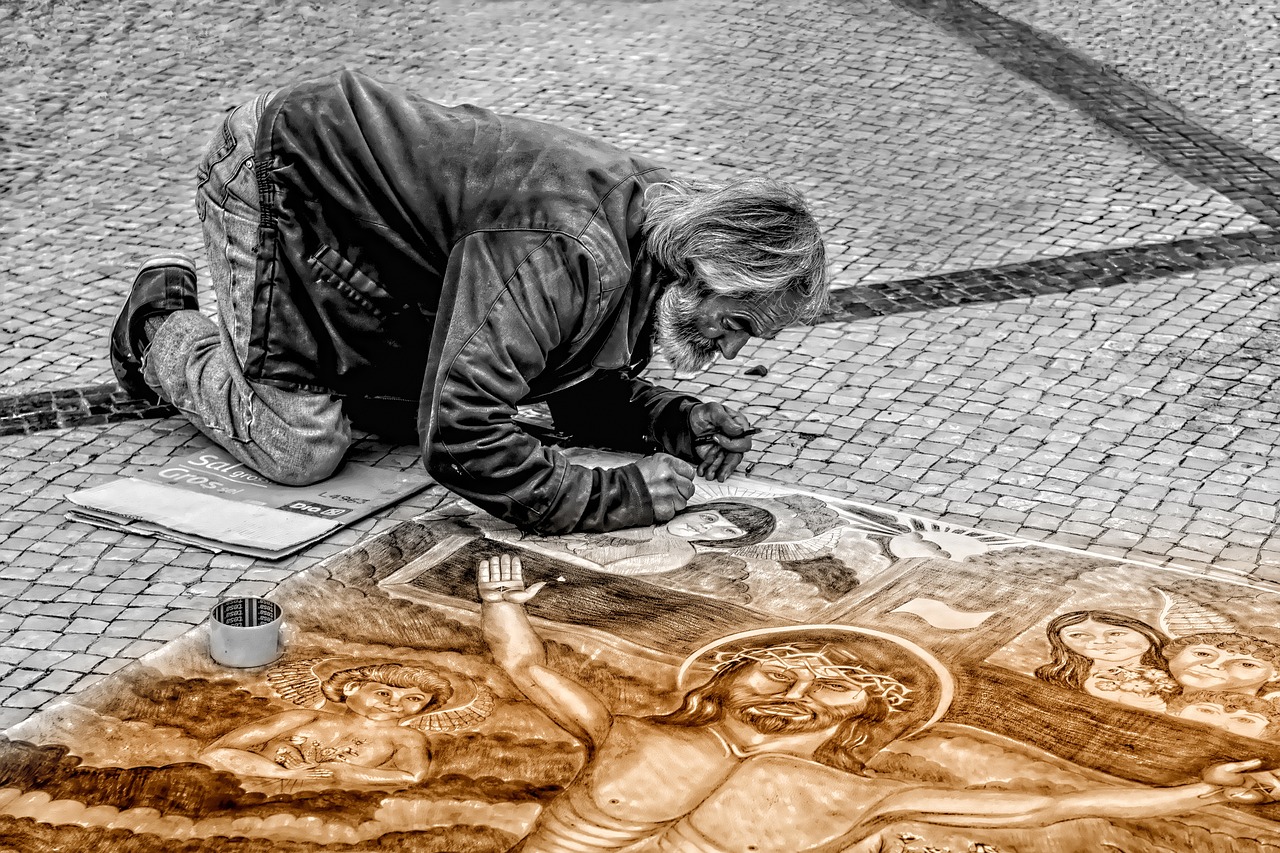Uncovering the Truth: Was Jesus a Master of Hypnosis?

Uncovering the Truth:
Was Jesus a Master of Hypnosis?
You’re probably familiar with the biblical stories of Jesus’s miracles – healing the sick, walking on water, even bringing Lazarus back from the dead. But have you ever wondered exactly how he was able to perform such seemingly supernatural feats? Some theorists believe that Jesus may have actually been a master hypnotist, using techniques like suggestion and rapport-building to alter people’s perceptions and pull off his “miracles.” In this article, we’ll dive into the evidence behind this fascinating hypothesis. From analyzing his language patterns to examining the science behind hypnosis’s effects, we’ll uncover insights into how Jesus may have tapped into the power of the mind. This may change how you view both hypnosis and some of history’s most famous biblical moments. So get ready to see the story of Jesus in a whole new light as we explore whether hypnosis holds the key to his legendary abilities.
Who Was Jesus of Nazareth?
Jesus of Nazareth, also known as Jesus Christ, lived about 2,000 years ago in ancient Palestine (modern-day Israel). Jesus was born into a Jewish family and grew up in the town of Nazareth. According toChristian belief, Jesus was the Son of God and the savior of humanity.
Around the age of 30, Jesus began his public ministry. He traveled throughout Palestine, teaching about the kingdom of God and performing miracles like healing the sick. Jesus attracted crowds of followers and disciples who believed he was the Messiah.
Jesus’s teachings focused on love, forgiveness, and faith in God. He taught using parables – stories with symbolic meaning. Jesus alsoperformed many miracles, including walking on water, turning water into wine, and resurrecting the dead. These miracles led many to believe Jesus had supernatural powers or was divine.
Around AD 30, Jesus entered Jerusalem during Passover where he was arrested and sentenced to death by crucifixion by the Roman governor Pontius Pilate. According to the Gospels, Jesus was crucified, died, and was buried, but rose from the dead three days later. Christians view Jesus’s resurrection as confirmation of his status as the Son of God and savior of humanity.
While Jesus’s life remains shrouded in mystery, most historians agree he was a real historical figure who had a profound impact on his followers. Whether or not Jesus possessed supernatural or hypnotic abilities is still debated, but his teachings and reported miracles have resonated with billions of Christians worldwide.
Jesus’ Miracles and Healings: Fact or Fiction?
The stories of Jesus walking on water, turning water into wine and raising Lazarus from the dead seem pretty fantastical. Were these actual miracles or just illusions? Some historians believe Jesus may have used hypnosis and the power of suggestion to convince people they witnessed miraculous events. After all, hypnosis can make people see, hear and feel things that aren’t really there.
Jesus was also said to have healed the sick – but did he really cure people or just hypnotize them into thinking they were well? Under hypnosis, people can be made to feel changes in their body and perception of pain. Perhaps Jesus hypnotized the ill into believing they were healed, at least for a time. The placebo effect is powerful, and people’s belief in a cure or remedy can often make them feel temporarily better.
Jesus was charismatic and able to sway crowds with his words and passion. Hypnosis requires the ability to capture people’s attention and imagination. By mesmerizing audiences with his speech andpresence, Jesus could have more easily spread his spiritual message and gained devoted followers. Some even consider Jesus a pioneer of modern hypnosis and neuro-linguistic programming techniques for motivating and influencing people. While we can’t say for sure if Jesus employed hypnosis, his miraculous acts and ability to inspire certainly suggest some kind of extraordinary power of persuasion at work. Whether divine or practical, Jesus’ talents allowed him to profoundly impact all of human history.
Techniques Jesus May Have Used to Influence and Persuade. Jesus was a masterful communicator and displayed an uncanny ability to captivate audiences. Some historians believe he may have employed hypnotic techniques to persuade followers and spread his message.
The stories of Jesus healing the sick and lame suggest he harnessed the power of suggestion. When he told the crippled man to “take up thy bed, and walk,” the man was cured. Likewise, Jesus cured the blind man by simply telling him his faith had made him well. The power of Jesus’ words and the people’s belief in him may have induced hypnotic-like trances that enabled these “miracles.”
Jesus was a gifted storyteller who shared lessons through parables, metaphors, and vivid imagery. These techniques are used by hypnotists to capture attention and implant suggestions in the subconscious mind. For example, Jesus likened faith to a mustard seed—a small seed that produces something great. This metaphor may have helped followers embrace his message.
Hypnotists frequently repeat phrases or instructions to guide subjects into an altered state of awareness. Jesus also used repetition in his teachings, repeating concepts like “love thy neighbor” and “do unto others.” Hearing these maxims over and over likely reinforced them in people’s minds, making the messages more persuasive. While we can’t know with certainty if Jesus employed hypnosis, some historians believe he exhibited an uncanny ability to influence and inspire. His charismatic presence, compelling storytelling, and masterful communication allowed him to spread a message of love, faith and salvation that resonates still today.
Was Jesus Using Hypnosis and Suggestion?
The Evidence of Jesus’ Charismatic Preaching
Jesus was said to be a charismatic preacher who spoke with authority and conviction. His preaching style was persuasive and moving, attracting crowds of thousands. Some historians believe his charismatic preaching may have induced an almost hypnotic state in followers. His use of vivid stories and metaphors could have bypassed rational thought and sparked an emotional response.
The New Testament describes Jesus performing exorcisms to cast out demons, as well as healing the blind, lame, and sick. While skeptics debate the validity of these miracle claims, supporters suggest Jesus may have used hypnosis and the power of suggestion to influence people’s perceptions and “heal” them. Under hypnosis, a person can be highly responsive to suggestions that they feel better or their pain has lessened.
After the resurrection, Jesus appeared to his disciples and followers. The post-resurrection Jesus seemed able to appear and disappear suddenly, and was not always immediately recognized. Proponents argue these strange encounters resembled hallucinations or visions one might experience under hypnosis or in an altered state of consciousness. However, others counter that there are no records of Jesus using trance inductions or other hypnotic techniques common in his time.
While the evidence is debated, some historians and scholars believe Jesus may have employed hypnosis and the power of suggestion in his preaching, healings, and post-resurrection appearances. However, most Christian scholars dispute these claims, arguing there is little evidence Jesus used hypnosis. They believe his miracles and persuasiveness stemmed from his divine authority and the truth of his message. The debate around Jesus as a hypnotist continues as modern scholars search for new insights into the historical Jesus.
Verdict: Could Jesus Be Considered a Master Hypnotist?
When looking at the abilities and feats attributed to Jesus in the Bible, some characteristics do point to hypnosis techniques. His miracles of healing the sick and lame involved altering perceptions and harnessing the power of suggestion.
Jesus frequently told those he healed that their faith had made them well. This emphasis on the mind-body connection and the belief in one’s own healing is a hallmark of hypnosis. When the mind believes something strongly enough, it can manifest in the body. Many of the “miracles” Jesus performed could be replicable through the power of hypnosis and the placebo effect. Jesus was said to be able to alter people’s perceptions, from turning water into wine to walking on water. While these stories seem fantastical, hypnosis has been shown to distort people’s perceptions of reality and create illusions. Jesus may have used hypnosis to make people perceive the impossible.
Through the gospels, Jesus often spoke with authority and commanded people to do things, like “rise, take up thy bed, and walk.” His followers frequently did what he told them without question. This ability to give suggestions that produce real results is a key sign of a skilled hypnotist. Jesus seemed to be able to heal through the power of his words alone.
Jesus was said to be an extremely charismatic and persuasive leader who attracted devoted followers. Hypnosis requires a trusting relationship between the hypnotist and the subject. Jesus’ charisma and ability to inspire faith in others would have made hypnosis techniques highly effective. His followers were highly suggestible to his messages.
While controversial, there are enough clues scattered throughout biblical accounts of Jesus’ life to propose that he may have employed hypnosis and the power of suggestion in his teachings and healings. Of course, for believers his works were divine miracles, not tricks of the mind. But for skeptics, hypnosis could provide plausible explanations for some of the wonders attributed to Jesus.
So, with this I just wanted to look more closely into if Jesus was really just a master hypnotist? The evidence seems to suggest he had an uncanny ability to captivate crowds and inspire belief. But it’s impossible to know for sure if hypnosis was the key ingredient. Either way, the stories of Jesus changed the course of history. His teachings sparked a movement that endures today. Whatever the source of his power, his legacy lives on. In the end, it comes down to faith. You must decide what you believe about this mysterious figure who walked the earth 2,000 years ago. The debate will undoubtedly continue, but the search for answers can lead us all to reflect more deeply.





